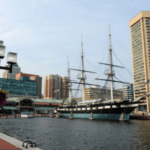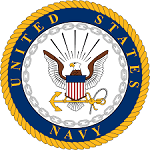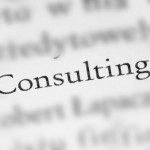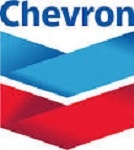Sustaining Competitiveness
Accredited Consulting Service for Dr. Quazi Ph.D Accredited Senior Consultant (ASC)
Executive Summary Video
The Appleton Greene Accredited Consultant Service (ACS) for Sustaining Competitiveness is provided by Dr. Quazi and provides clients with four cost-effective and time-effective professional consultant solutions, enabling clients to engage professional support over a sustainable period of time, while being able to manage consultancy costs within a clearly defined monthly budget. All service contracts are for a fixed period of 12 months and are renewable annually by mutual agreement. Services can be upgraded at any time, subject to individual client requirements and consulting service availability. If you would like to place an order for the Appleton Greene Sustaining Competitiveness service, please click on either the Bronze, Silver, Gold, or Platinum service boxes below in order to access the respective application forms. If you have any questions or would like further information about this service, please CLICK HERE. A detailed information guide for this service is provided below and you can access this guide by scrolling down and clicking on the tabs beneath the service order application forms.
Bronze Client Service
Monthly cost: USD $1,500.00
Time limit: 5 hours per month
Contract period: 12 months
SERVICE FEATURES
Bronze service includes:
01. Email support
02. Telephone support
03. Questions & answers
04. Professional advice
05. Communication management
To apply – CLICK HERE

Silver Client Service
Monthly cost: USD $3,000.00
Time limit: 10 hours per month
Contract period: 12 months
SERVICE FEATURES
Bronze service plus
01. Research analysis
02. Management analysis
03. Performance analysis
04. Business process analysis
05. Training analysis
To apply – CLICK HERE
Gold Client Service
Monthly cost: USD $4,500.00
Time limit: 15 hours per month
Contract period: 12 months
SERVICE FEATURES
Bronze/Silver service plus
01. Management interviews
02. Evaluation and assessment
03. Performance improvement
04. Business process improvement
05. Management training
To apply – CLICK HERE
Consultant Profile
Dr. Quazi is an approved Senior Consultant at Appleton Greene and he has experience in management, customer service and production. He has achieved a Doctorate of Philosophy in Applied Science / Chemical Engineering. He has industry experience within the following sectors: Energy; Oil & Gas; Manufacturing; Technology and Education. He has had commercial experience within the following countries: United States of America, or more specifically within the following cities: Houston TX; Los Angeles CA; New York NY; Baltimore MD and Austin TX. His personal achievements include: achieved corporate performance improvement 10%; saved capital projects budgets 25%+; completed industrial restructuring – $300 million; developed, implemented corporate leadership training and exported US energy, environmental technologies. His service skills incorporate: strategic planning; restructuring for competitiveness; global trade; program management and corporate training.
To request further information about Dr. Quazi through Appleton Greene, please CLICK HERE
Executive Summary
Sustaining Competitiveness
Sustainable competitiveness is an essential element in any corporate strategic plan and is necessary for assuring survival and growth of any business. Businesses operate in a very dynamic environment be it local, regional or global. The business executive assigned for the strategic planning must also be responsible for implementing the key components of the plan. The heart of the strategic plan is the information on competitors, their strengths, weaknesses, and their key reasons for success. Analyzing these data will provide the ingredients to develop the strategic plan for sustainable competitiveness.
Strategic planning process involves innovative approaches. Dynamic elements in the competitive business processes must be monitored diligently and decisions implemented immediately. Emerging markets and enabling technologies should be evaluated often and their appropriateness should be considered as the key elements of the plan and decisions implemented without any delay. For sustainability (and survivability) and for continued growth, business performances be monitored regularly and actions taken as necessary to continue sustainable operation(s).
Innovation in operational techniques and monitoring customer behavior are important elements in today’s business environment. It is essential that the operational programs be augmented and possibilities re-assessed or re-imagined immediately. Business leaders should be prepared to venture out of their normal roadmaps and be ready to demonstrate foresightedness in developing competitiveness enhancement.
Survivability, sustainability, and profitability are few daily challenges in any businesses that are involved in manufacturing products or providing services. Appropriate market research can assist in developing directions for understanding competitive fundamentals and the requirements for growths. Continuous improvement process is a technique for customizing functionality in any roadmaps. And, informed decision making is fundamental to creating winning business operation. Assessments of supply-chain-assets and optimizing those are important for maximizing revenue (profitability) and for readiness to take advantages of any M & A possibilities.
We live, work, and operate in global environment. The strategic plan for sustainable-competitiveness must include all possible activities in global context. Customer-care assessment and market intelligence are at the heart of sustainability and focused attention be given for implementation of any remedial actions. Where applicable, branding and brand opportunity marketing needs to be considered for competitiveness.
Businesses, such as energy, oil & gas, and manufacturing goods have adopted technologies that provide competitive advantages and growth. These include enabling technologies and techniques that would enhance cost reduction, energy savings, loss prevention, and improved product quality. The technologies are improved every day bringing additional enhancement to business operation. Businesses often miss recognizing these benefits. In addition, there are emerging technologies that could bring enhanced potential benefits to the businesses in the near-term basis. These technologies could help businesses become more competitive or create new products for a market segment. Businesses can accelerate by applying smart technologies such as digitization and automation thus enabling product-life-cycle faster, safer, and cheaper. Transformational technologies that are now being developed or tested would have commercial application in five-to-ten years.
The business leaders would benefit from sharpening their capabilities through capacity building and targeted learning processes. These industry leaders can serve as the point-person in their own business and become the “expert” to make their business sustainable and enable them to survive though the challenges in the dynamic market environment be it local, regional or global. In addition, industry consultants are available to assist in-house experts in demonstrating the process and techniques involved in developing the strategic plan.
Smart tools and techniques are available now to provide assistance in digitization, artificial-intelligence, machine learning, digital-twins, internet-of-things, and cyber security. Smart cloud based software are being developed and systems integration expertise are also available. Techniques for Life-Cycle-Evaluation should be considered appropriate for sustainability.
The in-house expert (and the industry consultant) must have process operational knowledge of the business. Operational technologies such as automation, optimization, process integration, energy conservation, resource-recovery and waste minimization do assist industrial sectors in making them sustainable and competitive. Their expertise must also include experience in risk analysis, aversion, and mitigation techniques. The strategy for creating the sustainable plan is similar for all most all the industrial sectors including for energy/power (coal, oil, and gas fired, geothermal and renewable such as biomass, solar, and wind), chemicals, petroleum gas processing and oil refining, petrochemicals, iron & steel, pulp & paper and manufacturing processes.
Service Methodology
Once a Client Company is interested, the AGC Consultant will have phone discussions with them. The Consultant will then develop the proposed Program outline and share it with the Client for review and comments. The Consultant will them update the Plan and then use it during the Program.
It is recommended that the Program starts with Bronze level and during that period the Consultant will prepare the Program in details. Once the Client Company accept the Program and its approach and methodology, the service delivery can be increased gradually to the highest level. The Client Company does have the flexibility in proceeding according to their own pace. This CIG provides the details of implementation for the desired results.
Service Options
Companies can elect whether they just require Appleton Greene for advice and support with the Bronze Client Service, for research and performance analysis with the Silver Client Service, for facilitating departmental workshops with the Gold Client Service, or for complete process planning, development, implementation, management and review, with the Platinum Client Service. Ultimately, there is a service to suit every situation and every budget and clients can elect to either upgrade or downgrade from one service to another as and when required, providing complete flexibility in order to ensure that the right level of support is available over a sustainable period of time, enabling the organization to compensate for any prescriptive or emergent changes relating to: Customer Service; E-business; Finance; Globalization; Human Resources; Information Technology; Legal; Management; Marketing; or Production.
Service Mission
The strategic and sustainable competitiveness plan for the Client Company must satisfy their desired requirements. The ideal plan should be flexible or agile enough for continuous improvement. The details of the plan will vary based on the business, industrial sector, and the country (or the region) where the Client would be operating. The plan must be kept current and reviewed frequently and updated for currency. The plan be appropriate for the baseline(s) established, the targeted competitiveness, fulfilling the requirements, and the sustainability desired.
The plan will address appropriate details including (1) Products along with technologies (current & emerging); (2) Markets (local, regional, global); (3) Customer Care (feedback surveys, review of comments, complaints mitigation, product enhancement, pricing policy reviews, etc); ( 4) Distribution (including supply-chain and warehousing); (5) Business Partners (strengths and weaknesses); (6) Competition (strengths, weaknesses, and agility); (7) Market Entry (and Barriers); (8) Budgeting and fund Utilization; (9) Financing; (10) Road Maps and Milestones; (11) Profitability (12) Sustainability; (13) Valuation; and (14) Investors’ rewards.
The Plan will be well defined or specified matching customer preferences. The technology or technologies being used must be well defined so that, if required the Client can understand its superiority or weaknesses. The plan should identify any emerging technology planned for use in the future with timing for the change-over. The local, regional, global markets shall be well identified or specified with all of its characteristics. The customers and their product preferences and pricing desired would be recognized. Customer feedback surveys with timing will be identified and specified. Feedback comments be reviewed quickly, and complaints resolved very quickly. Also, based on customer feedback the products quality improved and pricing policy reviewed and adjusted, if and when appropriate. The distribution logistics will be well defined for supply-chain and warehousing-assets optimization. The market entry activities (and barriers), should be well defined, and adjusted when implemented.
The plan will specify any business partners being used. Detailed information on these partners should be stated including their strengths and weaknesses. The details in the plan must provide appropriate data on Competition. All appropriate financial information will be included in the plan. Budgeting and fund utilization guidelines will be included in the plan The plan will include the milestone when certain activities are supposed to be taking place. The road-maps with milestones would allow improvement(s) when appropriate. The Client Company’s asset and the valuation will be developed for sharing with their stakeholders. It is more so if this Client is a publicly held company. So, the sustainability of the competitiveness is always at the shareholders mind and should be held at the very top considerations.
Service Objectives

- Establishing Baselines
The existing strategic plan, if available must be reviewed to understand the operation of the business. Understanding current practices, along with why and how the plan was developed are key elements of competitive sustainability. Also, considerations must be focused on evaluating how the business would be operating in the future. Baseline assessment starts with business history, particularly understanding the strengths and weaknesses during adverse business conditions. Baselines should include complete assessment of the goals and objectives; products and pricing; markets and customers; revenue stream(s); budgeting and budget performance; capital development programs; competitor’s strengths and weaknesses; own management team expertise; business partners and their capabilities and commitments; valuation; and the investors’ requirements. Businesses in energy, oil & gas, and manufacturing of goods have adopted certain technologies that assure competitive advantages and growth. These include enabling technologies that enhance cost reduction, energy savings, loss prevention, and product quality. Emerging technologies can help businesses becoming more competitive or creating new products. Most often, businesses can benefit from application of smart technologies such as digitization and automation in creating products that are faster, safer, and cheaper. It is important to establish the baselines with the technologies that are being used every day. It is also important to understand the enhancements that are being planned for these technologies in near-term basis. The businesses need to develop accurate baselines to assess the benefits the emerging technologies offer. The business leaders often are busy with daily activities and do not have time to observe market trends or changes that are taking place requiring operational course adjustment. Data gathering methodology and accuracy of data collected are paramount importance to the effectiveness of the strategic plan development. Certain data should be validated (or evaluated) before use. The baseline data needs to be reviewed by a third party, preferably by someone who would be looking from outside. In many instances, millions of dollars are saved using this practice. Industry consultants are available to assist in this process and they can help in selecting the techniques involved for estimating the potential benefits these can bring. - Targeting Competitiveness
Targeting competitiveness involves full understanding of the market dynamics including customer preferences and the competitors. This analysis should not only identify the competitors, but also have understanding on how they operate and react to certain market changes. The models so developed would then be tested with different scenarios. Based on the analysis, the business need to prioritize and build alternatives for developing requirements for sustainability. Price competitiveness includes price advantages and price transparency. Customer preferences with payment options are keys to quick response pricing. Communication with customers is very important for setting pricing. Smart tools and techniques such as digitization and artificial-intelligence with cyber security are important to an operational system. Appropriate techniques are then set for judging suitability for sustenance. The in-house expert and the industry consultant shall work together. Collectively, they must have the operational knowledge and know-how. Operational technologies including automation, optimization, process integration, energy conservation, resource-recovery, waste minimization are keys to sustainability. The industry consultant brings the required experience from the industries such as energy/power (coal, oil, and gas fired, geothermal and renewable such as biomass, solar, and wind), chemicals, petroleum gas processing and oil refining, petrochemicals, iron & steel and pulp & paper. The consultant also brings experience in risk analysis, aversion, and mitigation techniques. - Establishing Requirements
Identifying appropriate requirements are essential in developing an effective Sustainable Competitiveness Plan. Successful requirements determination depends on several key issues. Customers are king and they basically identify (or demand) the requirements for the product quality, reliability, and the price they are willing to pay. The price competitiveness, reputation in the market, and brand names are also important to customers. On-time delivery and top service are important to keeping the customers satisfied. The requirements also include product safety and environmental impacts. Other criteria that are important to determining the requirements include strategic marketing approaches and innovative techniques to product design or services. Essentially, the key requirements include profitability, sustainability and competitiveness. The elements that influence profitability are production capability, cost of production, costs for borrowing capital when needed, and finally the desired profit margins. Profitability is also influenced by production efficiency, access to appropriate raw-materials at the right price, inventory turnover, application of smart technologies, and intellectual property protection. In developing the appropriate requirements for the sustainable competitiveness plan the industry consultant must have working knowledge of operational technologies that include asset optimization, process integration, energy conservation, resource-recovery, waste minimization, and effective supply-chain utilization. The consultant needs to bring with him/her considerable industry experience on the appropriate industry sector. The industry sector could be anyone from energy/power (coal, oil, and gas fired, geothermal and renewable such as biomass, solar, and wind), chemicals, petroleum gas processing and oil refining, petrochemicals, iron & steel, or pulp & paper manufacturing. - Analyzing Sustainability
Sustainability analysis begins with understanding of business Strengths, internal Weaknesses; external Opportunities and recognizing external Threats. The information collected could be used in SWOT matrix development and analysis. Understanding its strengths and weaknesses of its assets, products, systems, technology and people, as a minimum are keys to the evaluation. The information on supply chain assets and their capability are also critical to business sustainability analysis. The information on any special situation such as unique products, special skills, superior technology, optimum cost, focused operation, and superior logistics that help supporting sustainable operation in the future. Also, data on customers, market trend, competitors, political/social risks, and technologies used are essential to evaluate opportunities and threats. The information collected help making better decisions. It also helps developing focused plan with sustainable values. It is essential to identify early the critical success factors. Prudent approach should be developing the SWOT chart and validating critical points initially, adding complexity gradually. It will help developing the value propositions first and demonstrating their benefits to the customers, as appropriate. It is expected that these values cannot be matched by competitors. Continuous market evaluation and analysis are keys to sustainability. Market trends are essential to validate the forecast and in identifying knowledge gap. Most difficult aspect of sustainability is unpredictability in forecasting regulatory environment and global competition. Key to all of these are listening, understanding, and communicating to the right party and sooner the better. - Sustainable Competitiveness
The strategic and sustainable competitiveness plan is the ultimate outcome of the consulting service. The ideal plan should be flexible or agile enough for continuous improvement. The details of the plan will vary based on the business, industrial sector, and the country (or the region) where the business would be operating. The plan must be kept current and reviewed frequently and updated for currency. The plan be appropriate for the baseline(s) established, the targeted competitiveness, fulfilling the requirements, and the sustainability desired. The plan needs to address appropriate issues including (1) Products along with technologies (current & emerging); (2) Markets (local, regional, global); (3) Customer Care (feedback surveys, review of comments, complaints mitigation, product enhancement, pricing policy reviews, etc); ( 4) Distribution (including supply-chain and warehousing); (5) Business Partners (strengths and weaknesses); (6) Competition (strengths, weaknesses, and agility); (7) Market Entry (and Barriers); (8)Budgeting and fund Utilization; (9) Financing; (10) Road Maps and Milestones; (11) Profitability (12) Sustainability; (13) Valuation; and (14) Investors’ rewards. The Product or products of the business must be well defined or specified matching customer preference. The technology or technologies being used must be well defined so that, if required the industry can understand its superiority or weaknesses. The plan should identify any emerging technology planned for use in the future with timing for the change-over. The local, regional, global markets shall be well identified or specified with all of its characteristics. The customers and their product preferences and pricing desired should be recognized. Customer feedback surveys with timing should be identified and specified. Feedback comments be reviewed quickly, and complaints resolved very quickly. Also, based on customer feedback the products quality improved and pricing policy reviewed and adjusted, if and when appropriate. The distribution logistics should be well defined for supply-chain and warehousing-assets optimization. The market entry activities (and barriers), should be well defined, and adjusted when implemented. The plan needs to specify any business partners being used. Detailed information on these partners should be stated including their strengths and weaknesses. The details in the plan must provide appropriate data on Competition. All appropriate financial information should be included in the plan. Budgeting and fund utilization guidelines should be in the plan and direction should be included on the approval authority. The plan should include the milestone when certain activities are supposed to take place. The road-maps with milestones should allow improvement(s) when appropriate. The business is the stakeholders’ asset and the valuation is very important to them. It is more so if this business is a publicly held company. So, the sustainability of the competitiveness is always at the shareholders mind and should be held at the very top considerations.
Achievements
ChevronTexaco (Chevron acquired Texaco, Unocal and Getty Oil)
Texaco Chemicals: $8 million Dollars and 2-years Program; New Lube Plant; Texas, USA
As the Project Manager for building the Texaco’ Lube oil’s new production facility in Texas ($8 million US Dollar), the Consultant insisted on studying Texaco’s existing production facility first. After the study and adjusting the operation of the existing plant, the Consultant was convinced that Texaco could upgrade the existing plant to get the desired products by spending about 25% of the approved capital budget only. Thus, Texaco chemicals saved 75% of the capital ($6 million) already authorized. Texaco management was very pleased and had a party in their head-office to recognize the Consultant and his project team with traditional Texaco “Belt-Buckles”. The presentation was attended by their Divisional Vice Presidents of Production, Engineering, and Marketing.
Unocal Oil Refinery: $50 million and 15 months Program; Refinery Fire Rebuild; Illinois, USA.
As the Project Manager for the Project, the Consultant completed the project in 9 months (compared to 15 months scheduled) in spite of major construction challenges and earned performance bonus for early completion. The refinery was shut-down because of fire and explosion. Early project completion (six months) allowed Unocal earn six-months’ revenue.
Unocal Oil / Air-Products Joint-Venture: $65 million and 18 months Program: New Hydrogen Plant, California, USA
As the Program Manager for the Project, the Consultant helped completing the project saving 38% of the capital budget. The Hydrogen plant process design was modified based on Consultant’s design-team’s recommendations.
Unocal Oil/Gas Production: $18 million and 18 months Program: Offshore Platform Upgrading; Off-Shore California Coast, USA.
As the Program Manager for the Project, the Consultant recommended re-evaluation of design data. After re-evaluation of the design data and the project-economic-life assessment, the project was cancelled as the project could not support economic justification any more.
Getty Oil Refinery: $50 million and 2.5 years Program; Refinery Upgrading, Delaware, USA
The Consultant lead a team to save 50+ % of heat input in the refinery and upgrade the existing Fluid-Coker to reduce emissions from the refinery. The Consultant completed the project within the schedule and project budget in spite of major construction challenges. The Getty Program Manager acknowledged the achievement in a top-management meeting. Getty had two other major projects under implementation around the same time and both were late and over-running the budgets.
SaudiAramco & SABIC
Aramco: Corporate Training; Two years, Twice a Year Program; Saudi Arabia
After receiving an invitation, the Consultant and his Colleague (Editor of Project Management Handbook) developed training programs for Aramco’s Program Managers, Project Managers, and Project Engineer. These trainings were conducted in Saudi Arabia at Aramco’s Head Quarters. In two years, they successfully trained over 200 managers and engineers on Project Management and Lump Sum Contracting.
SABIC: $1.5 million; Two Years Program: Development of Corporate Standards and Guidelines for Petrochemicals Manufacturing, Saudi Arabia.
SABIC, world’s largest Petrochemicals manufacturing company operates 16 major manufacturing plants. These plants were designed and built by different licensors and were built on different codes and standards. As the Program Manager, the Consultant successfully implemented the program and developed over 200 SABIC Corporate Standards and Guidelines applicable to all manufacturing plants. These Standards and Guidelines were completed within the Program budget.
World Bank / Asian Development Bank / United Nations
World Bank: 30 Months and $1.45 million Program in Bangladesh. Developed and implemented “Environment and Safety Management System (ESMS) for Bangladesh Oil, Gas and Mineral Corporation (Petrobangla) and its five Subsidiaries.
As the Program Manager, the Consultant successfully implemented the Program on time and within budget. The Program established databases and compared those with regulations in the developed and developing countries. The Program developed a complete ESMS program for 10,000 employees of Petrobangla. The training programs were developed and implemented for 100+ in-country technical personnel and 35 managers and specialists in the US.
Asian Development Bank: 10 months and $0.48 million Program in China (Anhui Province).
Developed and implemented “Industrial Pollution Abatement Program” for a power-plant, a chemical plant, a petrochemical complex, and a large lake in Anhui Province. The Program helped reduce energy consumptions by 50+% and pollution reduction by 50 to 75%. Based on the successful implement of the Program, the Anhui province received $300 million dollar loan from ADB & Bank of China. As the Program Manager, the Consultant successfully implemented the Program on time and within the budget. . At the conclusion of the Program, the Director of Environmental Pollution Bureau of the Anhui Province wrote “I would like to express our heartfelt gratitude to your profound concern of our project”.
The United Nations (Department of Economy and Social Affairs): “Capacity Building for Widespread Adoption of Clean Production for Air Pollution Control Program in Benxi, Liaoning Province in China.
The Program included Technological Upgrading, Clean Production and Industrial Restructuring for power generation, iron & steel manufacturing, and medical devices manufacturing. As the Program Manager, the Consultant successfully implemented the Program on time and within the budget. At the completion of the Program, the Consultant was formally recognized by the City in China.
Southern California Edison & City of Los Angeles Department of Water & Power
Southern California Edison: 350 MW Power Generating Boiler; Pollution Control Upgrading Program; California, USA
For this design and construction support program, the Consultant was the Program Manager and helped successfully upgrading the boiler and improving the boiler’s combustion efficiency. At the same time, Consultant helped reducing boiler’s Green-House-Gas (GHG) emissions. The Consultant took the initiative in developing an intellectual property that was applied to other power plants operating on coal, oil, and natural gas in the country. The know-how was sold to two major utility companies in the US.
City of Los Angeles Department of Water & Power: 50 MW to 150 MW Power Generation; 30 months; Industrial Waste-Fuels Utilization Program; California, USA
The Consultant spearheaded the effort to train the engineers and managers of the Los Angeles Department of Water and Power (LADWP). Based on successful training program, LADWP asked for developing power generation opportunities with the local Refineries in generating power from the refinery waste fuel gas. LADWP was very pleased as the Consultant helped them in developing and implementing a “fuel-storage leasing-plan” during off-season and in earning about half-a-million dollar a year.
US Department of Navy / US Department of Army / US Department of Homeland Security.
US Department of Navy: $34 million, 5 Year Program; Nanotechnology Assessment and Devices Development, Maryland, USA
As the Program Manager, the Consultant identified the devices with nanomaterials and tested as corrosion prevention paints and erosion-reducing lubricants. The task were completed on time and within the budget. The program identified an annual savings of $500 million by the Navy.
US Department of Army: Implementation of GPS Software in Assets Tracking and Managements at the US Army Base; California, USA
As a Lead Specialist on a technical team (subcontractor to Lockheed-Martin), the Consultant assisted integration of a GPS based software in the defense database for asset tagging, tracking, monitoring, and management in an Army Base. The Lockheed Martin program manager appreciated the work performed by the Consultant that helped them complementing their program successfully.
US Department of Homeland Security: $0.5 million, 6 months Program; Implementation of Security Control & Managements Systems at the US Department of Homeland Security Offices; Arizona, California, and Texas; USA
As a Project Manager, the Consultant led a team of specialists for installation of security software, testing and integrating those with US DHS central database. The programs were completed on time and within the budget for each office. The DHS Project Manager called to appreciate the work done by the Consultant and his team.
More detailed achievements, references and testimonials are confidentially available to clients upon request.
Industries
This service is primarily available to the following industry sectors:
Energy
The World has been challenged with energy demands as the middle-class continues to grow. Almost 50% of energy demands are connected with industrial activities. As the middle-class continues to grow the demand for durable goods, appliances, and consumer goods produced by the industries are increasing. Industrial growth requires energy. Conventional energy is being generated by fuels. During the last several decades, contribution of nuclear energy in the US energy mix is staying flat. Conventional fossil-fuels like coal, oil, and natural gas have long been the fuels of choice for generating energy. The fuel mix has been changing, but the share of renewable energy from solar, wind, and biomass are increasing gradually. Currently, coal is being used as the fuel for generating 50% of the energy in the US. Because of pollution concerns from coal fired power plants, pressure is on to phase out coal as the source of energy. Coal gasification of certain quality coals help reduce emissions from combined cycle energy generation and at the same time help making feed-stocks for chemicals or petrochemicals production. These days, less and less coal is being used for energy generation. It is expected that much less coal will be used in 2050. Use of oil as fuel for energy generation is being reduced and gradually taken over by natural gas. Natural gas is a convenient fuel that is more efficient and produces less green-house-gases responsible for creating global warming. Because of successful fracturing technology helps producing Shale oil and gas primarily in the US. Natural gas is expected to become the primary fuel for generating additional energy during the next 15 to 20 years. It is expected that the share of oil in generating energy will gradually be minimized. It takes 10+ years to build a coal fired power plant because of permitting process. But, it may take only 4 to 6 years to build a new gas fired energy plant. Regulatory and economic pressures are forcing the energy producers to cogenerate process-steam and power. Most of the existing plants are old and are going through energy efficiency improvement. The energy producers are now looking at applying developing (emerging) technologies that could help lowering carbon foot-prints and green-house-gas emissions.
Transformation and sustainability would soon be the strategic approach to the growth of the energy industry. Emerging technologies and market demands will help shape the energy industry. Current trends for improving the economics and sustainability of the energy industry are through the applications of solar, wind, and energy storage and this approach will shape the industries path through the energy transition. California and Texas have already high proportions of Wind energy. Most of the US coastal states are implementing Wind energy programs. Solar energy option has become cost competitive in certain parts in the US and in the developing world. Utility companies are now closely looking into integrating Storage technology with the renewable-energy projects for cost competitiveness and supply stability. Global needs for small energy plants has increased greatly. Midsize power plants (between 0.50 MW and 5 MW) will most likely be based on solar generation supported by gas/liquid fueled engines/turbines. Large Solar Power plants (between 5 MW and 20 MW) are very popular internationally. These plants have become cost competitive. Certain transmission networks in the US have started showing transmission bottlenecks. Because of this reason, micro-grids are becoming very popular and cost competitive. These micro-grids with storages can be optimized with supply and demands and cyber-secured for cost competitiveness. Optimized micro-grids are getting popular for hospitals, hotels, airports, and local industries.
 Oil & Gas
Oil & Gas
For about a century, oil (refined to different fuel specifications) has helped the industrial growth and becoming the recognized transportation fuel globally. Natural gas has slowly entered in to the industrial fuel market and gradually taking over as the preferred fuel. These options are facilitated by evolving government regulations, consumer preferences and market dynamics. The industries are driven by economic factors and industry sustainability consideration. The oil and gas industries experienced market volatility before, but there were adequate comfort in predictability. Very recently, that comfort is disappearing. The oil and gas industries need to be vigilant and agile. Their growth and operating strategies should adopt policies and practice that can be adjusted quickly with the changes in trends, policies or customer preferences. The oil industries are going through transformation. The specifications of the oil products are changing because of regulations, market dynamics and price competitiveness. The oil and gas industries have large investments in Production or Upstream operations. Most of the operating assets are old and require considerable investments for upgrading or modernizing. Sometime, the required investments are large and not economically justifiable. The mid-stream and downstream assets need to be optimized for certain preferred operational benefits, but it could run into bottlenecks. These optimization studies need to include the supply-chain assets as well. The Downstream assets such as refinery processing units are not easy to modernize, including for low-carbon / low-sulfur fuels. Solving the problem is a matter of fundamental constraints on the global supply and demand balance and feed stock availability.
Currently, natural-gas is playing much more important role in the global energy-mix. The Shale exploration in the US is producing proportionately more gas than oil. Increase in living standards globally is helping use of more natural gas in the energy generation. Additional two billion people are expected to be added to the global population by 2050, mostly in the developing world. This will open up additional opportunity for natural gas. Currently, several LNG (Liquefied Natural Gas) plants are in construction and about 20 countries are exporting LNG to 40 importing countries. As the time passes, we are going to experience more and more demand for LNG. Gas liquids are good raw materials for petrochemicals manufacturing. As the global population increases, the demand for consumer goods with plastics and synthetic materials are going to be higher. The need for emerging technology based hydrogen will be increasing. Planning is underway for the hydrogen based infrastructure and economy including for transportation.
Manufacturing
Today’s manufacturers are facing the challenges with global market dynamics, profitability and competitiveness. Their manufacturing plants are mostly old and were built several decades ago. These manufacturers have constant need to upgrade and restructure to stay competitive. They need to improve their operation and safety management systems to keep-up with regulatory challenges. Also, these plants need to improve product quality, minimize production costs, improve agility and responsiveness, improve coordination with customers and suppliers, and improve plant data quality for business analytics. Plant upgrading and restructuring are normally undertaken to address in an incremental basis, particularly for energy conservation, emissions control, and resource conservation. Few plants do consider maximum upgrade at one time. Doing it once is costly and may be difficult for borrowing capital, especially when the plant is not profitable. When upgrading, these plants need to ensure sustainable value management.
Upgrading plant equipment and operation are significantly different for different industrial sectors including for energy generation; oil and gas exploration, processing and refining; pulp and paper; chemicals and petrochemicals; and industrial parts manufacturing. The approaches will be different for each of these industries. Detail scope of upgrading and modernizing of these plants needs to be addressed individually and in details. Upgrading for “Smart Manufacturing” concept is tempting. Today, manufacturers are looking at greater benefits offered by digital transformation. In many plants the biggest challenge is generating and collecting appropriate data digitally and turning those into actionable operation. Certain plant managements are not familiar with it or do not have technical knowhow to go through the digital transformation justification. To empower a plant management for digitizing process, they need to acquire appropriate knowledge on the roadmaps to incremental migration for the desired destination. There is a good chance that some of your competitors are already implementing smart manufacturing techniques. Roughly, over 40 percent of the plants have initiated smart manufacturing programs. There are risks in implementing new technology, but it is very important to consider moving towards with smart manufacturing for sustaining competitiveness.
 Technology
Technology
For centuries, our life and society have been nourished by technology. Ground breaking science is the stepping stones for developing appropriate technology. Technology development requires innovation, creativity, objectivity, integrity and planned inspiration. Trends intersecting with innovation help develop the right technology. Competition is at the heart of creating technologies. Market dynamics inspire building strong relationship through strategic partnership, technology alliance and for creating customized team. Development of technology and its supporting tools require improved risk management capability. Sometime, large investments are required for technology development programs, but that must be supported by marketplace Success. For the energy, oil and gas, and manufacturing industries, we have been using a large number of well proven and tested technologies. These technologies are the work horse for many decades, but recently demand is on for improving performance efficiencies and cost competitiveness. Recently, efforts are on its way to improving existing technologies and /or developing next generation of modular, process-intensified manufacturing technologies. The efforts are directed towards improving energy conservation and feed stock conversion efficiencies, and also boosting productivity through merging and/or integrating with other operations. The other objectives include reducing capital and operating costs and improving productivity. Also, educating and training workforce are included in key objectives.
Since 1990s, we are in the digital transformational age and have been focused on infrastructure restructuring for adoption of digitization, database creation and storage, and information Management. Informational technologies include digitization, artificial intelligence, machine learning, digital twins, internet of things, and cyber security. Infrastructure restructuring includes automation and optimization, process integration, resource conservation and utilization, maximizing assets utilization, and supply-chain integration as a minimum. Currently, focuses are on monitoring emerging technologies. Certain application of emerging technology sooner can prove to be prudent strategy. More attention is on trending technologies that are categorized as enabling technologies, transforming technologies, and sustaining technologies. Enabling technologies cover acceleration of digitization, automation and virtualization across the life cycle. Transforming technologies are considered for application towards future transportation and logistics, low-carbon energy systems, sustainable healthcare, and creating precision food. Sustaining technologies include application to natural ecosystems and better use of ocean resources. Adoption and integration of emerging technology will require technology readiness assessment, prototyping and testing, sustainability planning, risk assessment and mitigation, financing, manufacturing, marketing and customer feedback. Short-term benefit search on potential technology application should include which technology and what trend should we monitor, and how we can use those for greater benefits to the industries and to our society. To achieve growth and cost competitiveness, it will require identifying, developing, and integrating external technologies through acquisition, joint venturing, collaborative development, and licensing with the appropriate technology developer or licensor.
Education
Capacity building or continuing education and training have an important role in enhancing economic growth in a society. A progressive community or a business can play a very important role in the economic development. Organizations engaged in capacity building contribute greatly in maintaining competitiveness in the regional or global economy. These organizations normally identify the needs and then acquire (or develop) the required emerging knowledge. They spearhead the efforts in developing and implementing continuing education and training programs. These organizations then can assess the current knowledge base or capability of a business, complete the needs assessments, and then develop the prescribed training programs. After sharing their thoughts with the client business on how this client business would benefit from the enhanced knowledge and skills, then develop the course contents for implementation. Some of the capacity building and continuing education programs may include (1) Leadership Development; (2) Manufacturing Talents Development; (3) Business Transformation; (4) International Trade; (5) Exporting Mechanics; (6) Sustainability; and (7) Competitiveness.
Baseline assessment techniques are key to skills development and in identifying and acquiring capability in developing knowledge enhancement programs. Identifying and delivering-methodology should also address the regional and cultural diversity, and regulatory compliance requirements including for resource recovery and pollutions mitigation. Also, the capacity building, continuing education, and training programs should be emphasizing on the knowledge delivery techniques for the targeted audience. For effective programs, considerations must include costs and associated expenditures, program schedule, provider’s qualifications and capabilities, number of attendees and their present skills and competencies, and the methodology for assessing the return on investment for this capacity building program.
Locations
This service is primarily available within the following locations:
Houston TX
The City of Houston has a diversified economy, focused primarily within oil and gas, health care, service sectors and international trade. The City’s economy is supported by a broad industrial base in energy, manufacturing, aeronautics, and transportation. Many oil and gas companies’ global business offices are in Houston area including of Aramco, British Petroleum, ChevronTexaco, ExxonMobil, and Shell. Houston area has many oil refining and storage facilities, gas processing (LNG) plants, and chemicals/petrochemicals manufacturing facilities. These plants are the sources of air and water pollution. The Texas Commission on Environmental Quality (and US EPA) is working with the industries to secure sustainable clean-up.
Houston has the second most Fortune 500 headquarters of any U.S. municipality within its city limits (after New York City). The Port of Houston ranks first in the United States in international waterborne tonnage handled and second in total cargo tonnage handled. The 20th century brought rapid growth in Houston, including the port and railroad infrastructures. During mid-20th century, Houston’s economy diversified to include many healthcare centers. Houston is the home to the Texas Medical Center—the world’s largest concentration of healthcare and research institutions—and NASA’s Johnson Space Center, where the Mission Control Center is located. Houston is most racially and ethnically diverse major metropolis in the U.S. It is the home to many cultural institutions and exhibits, which attract more than 7 million visitors a year. The City hosts famous Rodeo Show and Offshore Technology Exhibits. Houston is the home of Rice University, University of Houston (with multiple campuses in the City), University of Texas Children Medical Research Center and Baylor Medical University. Houston is the most populous city in the State of Texas, fourth most populous city in the United States, the sixth most populous in North America, with an estimated 2018 population of 2,325,502. Houston is the eighth most expansive city in the United States and it is the largest city in the United States by total area. Two bordering communities (Sugar Land and The Woodlands) make-up the greater Houston.

Los Angeles CA
The City of Los Angeles (often known by its initials L.A.) has a diverse economy and hosts businesses in a broad range of professional and cultural fields. It also has the busiest container port in the entire Americas. The City has been ranked 6th in the Global Cities Index and 9th in the Global Economic Power Index. The Los Angeles metropolitan area also has a gross metropolitan product of $1.0 trillion (as of 2017), making it the third-largest city by GDP in the world, after the Tokyo and New York City metropolitan areas. Los Angeles hosted the 1932 and 1984 Summer Olympics and will host the 2028 Summer Olympics. Los Angeles metropolitan area is the home of several oil and gas processing plants, refineries, and storages facilities, and power generating plants and also have a large number of manufacturing industries. The region has been experiencing significant air pollution (SMOG) and the regulatory agency “South Coast Air Quality Management District (SCAQMD)” is physically located within the City Metropolitan area. SCAQMD is focused in reducing air pollutions in the region. Two utility companies in the area (City of Los Angeles Department of Water and Power and Southern California Edison) have aggressive plans to cut emissions (Greenhouse Gases) in greater LA area. They also have renewable energy sources added to their energy mix. In addition, California Air Resource Board is moving towards having low-carbon fuels in near term basis.
Los Angeles is the most populous city in California; the second most populous city in the United States, after New York City; and the third most populous city in North America, after Mexico City and New York City. With an estimated population of nearly four million people, Los Angeles is the cultural, financial, and commercial center of Southern California. The city is known for its Mediterranean climate, ethnic diversity, the entertainment industry, and its sprawling metropolis. The City has many social and cultural sites including the Disney Land and Universal Studio. Los Angeles lies in a basin in Southern California, adjacent to the Pacific Ocean, with mountains as high as 10,000 feet (3,000 m), and deserts. The city covers about 469 square miles (1,210 km2) and it is the seat of Los Angeles County, the most populous county in the United States. With a population of 13.1 million people, the Los Angeles metropolitan area (MSA) is the second-largest metropolitan area in the nation after the New York metropolitan area. The Los Angeles combined statistical area, also known as Greater Los Angeles, includes the metro areas of Los Angeles–Long Beach–Anaheim, Riverside–San Bernardino–Ontario, and Oxnard–Thousand Oaks–Ventura. This is the second most populous U.S. combined statistical area after New York, with a 2015 estimate of 18.7 million people.
New York NY
New York City is the major U.S. financial and banking center in the United States. New York has the large corporate headquarters of publicly traded companies in the US. It is the home of second largest port in the country and as such has tremendous concentration of companies dealing with international trades and commerce. New York City has been described as the cultural, financial, and media capital of the world, significantly influencing commerce, entertainment, research, technology, education, politics, tourism, art, fashion, and sports. It is the home to the headquarters of the United Nations and an important center for international diplomacy. New York has world’s two largest stock exchanges by total market capitalization, namely the New York Stock Exchange, located on Wall Street in the Financial District of Lower Manhattan, and NASDAQ, headquartered in Midtown Manhattan.
New York is the most populous city in the United States. With an estimated 2018 population of 8,398,748 distributed over about 302.6 square miles. New York is also the most densely populated major city in the United States. Located at the southern tip of the U.S. State of New York, the city is the center of the New York metropolitan area. Situated on one of the world’s largest natural harbors, New York City and its metropolitan area constitute the premier gateway to the US. As of 2019, the New York metropolitan area is estimated to produce a gross metropolitan product (GMP) of $2.0 trillion. If greater New York City were a sovereign state, it would have the 12th highest GDP in the world. New York is home to the highest number of billionaires of any city in the world. Providing continuous 24/7 service, the New York City Subway is the largest single-operator rapid transit system worldwide, with 472 rail stations. The city has over 120 colleges and universities, including Columbia University, New York University, and Rockefeller University, ranked among the top universities in the world.

Baltimore MD
Baltimore is a predominantly industrial town, with an economic base focused on steel processing, shipping, auto manufacturing, and transportation. Major manufacturing, heavy industry, and restructuring of the rail industry, Baltimore has shifted to a service-oriented economy. Johns Hopkins Hospital (founded 1889) and Johns Hopkins University (founded 1876) are the city’s top two employers. Baltimore is the most populous city in the U.S. state of Maryland, as well as the 30th most populous city in the United States, with a population of 602,495 in 2018. As of 2017, the population of the Baltimore metropolitan area was estimated to be just under 2.802 million, making it the 21st largest metropolitan area in the country. The City’s regional airport shares the capacity with Washington DC. Baltimore is located about 40 miles (64 km) northeast of Washington, D.C., making it a principal city in the Washington-Baltimore combined statistical area (CSA), the fourth-largest CSA in the nation, with a calculated 2018 population of 9,797,063. Washington has a growing, diversified economy with an increasing percentage of professional and business service jobs. The gross product of the Washington Metropolitan Area makes it the fourth-largest metropolitan economy in the United States. The federal government accounted for about 29% of the jobs in Washington, D.C. The World Bank and the Export-Imports are head quartered in Washington DC. There are lots of commercial and trading activities in Washington DC.
Washington, D.C., is located on the Potomac River bordering Maryland and Virginia, is one of the most visited cities in the world, with more than 20 million tourists annually. Commuters from the surrounding Maryland and Virginia suburbs raise the city’s daytime population to more than one million during the workweek. Washington’s metropolitan area, the country’s sixth largest (including parts of Maryland, Virginia and West Virginia), had a 2017 estimated population of 6.2 million residents. The city hosts 177 foreign embassies as well as the headquarters of many international organizations, trade unions, non-profits, lobbying groups, and professional associations, including the World Bank Group, the International Monetary Fund (IMF), the Organization of American States, AARP, the National Geographic Society, the Human Rights Campaign, the International Finance Corporation, and the American Red Cross.

Austin TX
Austin has a large concentration of high-technology engineering, computer, and microprocessor companies. It is also the Capital of Texas. Austin is the 11th-most populous city in the United States, the fourth-most-populous city in Texas, and the second-most-populous state capital city (after Phoenix, Arizona). It is also the fastest growing large city in the United States from 2015-2016, and the southernmost state capital in the contiguous United States. By 1990s, Austin emerged as a center for technology and business. A number of Fortune 500 companies have headquarters or regional offices in Austin, including 3M, Amazon, Apple, Google, IBM, Intel, Oracle, Texas Instruments, and Whole Foods Market. Dell’s worldwide headquarters is located in the nearby suburb of Round Rock U.S. News & World Report named Austin the No. 1 place to live in the U.S. for 2017 and 2018. In 2016, Forbes ranked Austin No. 1 on its “Cities of the Future” list, then in 2017 placed the city at that same position on its list for the “Next Biggest Boom Town in the U.S.” Also in 2017, Forbes awarded the South River City neighborhood of Austin its #2 ranking for “Best Cities and Neighborhoods for Millennials”. WalletHub named Austin the #6 best place in the country to live for 2017. The FBI ranked Austin as the #2 safest major city in the U.S. for 2012. The city also adopted “Silicon Hills” as a nickname in the 1990s due to a rapid influx of technology and development companies.
Clients
This service’s current clients or employers include:
Chevron (Subsidiary: Texaco, and Acquired: Unocal) 
Chevron Corporation is an American multinational energy corporation headquartered in San Ramon, California, and active in more than 180 countries. Chevron is engaged in every aspect of the oil, natural gas, and geothermal energy industries, including hydrocarbon exploration and production; refining, marketing and transport; chemicals manufacturing and sales; and power generation. Chevron is one of the world’s largest oil companies; as of 2019, it ranked eleventh in the Fortune 500 list of the top US closely held and public corporations.
On October 15, 2000, Chevron announced acquisition of Texaco in a deal valued at $45 billion, creating the second-largest oil company in the United States and the world’s fourth-largest publicly traded oil company with a combined market value of approximately $95 billion. The acquisition was completed on October 9, 2001. The merged company was named ChevronTexaco. On May 9, 2005, ChevronTexaco announced it would drop the Texaco moniker and return to the Chevron name. In 2005, Chevron purchased Unocal Corporation for $18.4 billion, increasing the company’s petroleum and natural gas reserves by about 15%. Because of Unocal’s large South East Asian geothermal operations, Chevron became a large producer of geothermal energy.
Chevron’s oil and gas exploration and production operations are primarily in the US, Australia, Nigeria, Angola, Kazakhstan, and the Gulf of Mexico. As of December 31, 2018, the company’s upstream business reported worldwide net production of 2.930 million oil-equivalent barrels per day. In the United States, the company operates approximately 11,000 oil and natural gas wells in hundreds of fields occupying 4,000,000 acres (16,000 km2) across the Permian Basin, located in West Texas and southeastern New Mexico. In February 2011, Chevron celebrated the production of its 5 billionth barrel of Permian Basin oil.
Chevron’s downstream operations manufacture and sell products such as fuels, lubricants, additives and petrochemicals. The company also has interests in 13 power generating assets in the United States and Asia. Chevron’s chemicals business includes 50% ownership in the Chevron Phillips Chemical Company, which manufactures petrochemicals, and the Chevron Oronite Company (which develops, manufactures and sells fuel and lubricant additives)
Chevron’s alternative energy includes 500kW Solarmine photovoltaic solar project in Fellows, California. Chevron’s alternative energy operations include geothermal, solar, wind, biofuel, fuel cells, and hydrogen. Chevron has a 740 kW photovoltaic demonstration project in Bakersfield, California. It launched a 29-MW thermal solar-to-steam facility in the Coalinga Field to produce the steam for enhanced oil recovery. As of 2012, the project is the largest of its kind in the world.
 Saudi Aramco / SABIC
Saudi Aramco / SABIC
Aramco Americas has called Houston home since in 1974. In 1952, Aramco’s headquarters moved from New York to Dhahran, Saudi Arabia, where the Saudi government began a gradual buyout of Aramco’s assets. By 1980, the buyout was complete. We are wholly owned by Saudi Aramco. The formation of our company were set in motion in 1933 when Saudi Arabia signed a historic concession agreement giving Standard Oil of California (Socal) and its wholly owned subsidiary, California Arabian Standard Oil Company (CASOC), permission to explore for oil. Two years later, The Texas Company (Texaco) acquired half of CASOC. In 1944 the combined entity was renamed Arabian American Oil Company, or Aramco.
Standard Oil Company (later Exxon) and Socony-Vacuum Oil Company (now known as Mobil) became part owners in 1948 to help open markets for the immense hydrocarbon reserves being developed in Saudi Arabia. Starting with just a small group of intrepid explorers, the history of Saudi Aramco goes back more than 80 years to the sands of the Saudi desert. Throughout the 1990s, we gradually extended our ties and partnerships across the world making several international investments.
SABIC
Ranked among the world’s largest petrochemicals manufacturers, SABIC is a public company based in Riyadh, Saudi Arabia. 70% of the Company’s shares are owned by the Saudi Arabian government, with the remaining 30% publicly traded on the Saudi stock exchange. SABIC began in 1976 by Royal decree and its growth has been nothing short of miraculous. Today, the company has operations in over 50 countries with a global workforce of over 33,000 talented individuals.
SABIC is composed of four strategic business units – Petrochemicals, Specialties, Agri-Nutrients, and Metals. They support customers by identifying and developing opportunities in key end- markets such as construction, medical devices, packaging, agri-nutrients, electrical and electronics, transportation and clean energy. SABIC’s global presence continues to grow rapidly. Our ambitious plans for expansion are matched by the development of an infrastructure of manufacturing plants, technology centers, distribution centers, offices and storage facilities worldwide. This enables us to respond efficiently to the needs of our customers in key markets around the world.
The company’s manufacturing, sales, technology and innovation facilities are located throughout the globe and are managed by four regional offices: the Middle East and Africa, Asia, the Americas and Europe. To find out more about our operations please see the worldwide section. Because we are constantly looking to the future, we invest heavily in Technology and Innovation (T&I). Our T&I facilities are spread across the globe with hundreds of dedicated scientists contributing to the ongoing development of new patents.
Southern California Edison
Together, we’re moving SoCal toward 80% carbon-free energy supply. Our Smart Ideas include finding new solutions that can help you save money and manage your energy. We’re working every day to reduce wildfire threats and improve safety throughout Southern California. We’re updating our grid by installing fire-resistant poles and other equipment. From healthier air to stronger communities, we believe that clean, reliable energy makes life better for all Southern California. (Note: SCE is one of the large power utility companies in California and it owns several power generating plants primarily using natural gas fuels and transmits/distributes in California)
 US Navy
US Navy
The US Department of Defense primarily consists of US Army, US Air Force, and US Navy. US Navy has technology development and testing branch that conducts testing of innovative and emerging technologies. This assists in reducing cost of their operation and development of new equipment and devices. Most of these activities are “Secret” or “Top Secret”.
The World Bank
The World Bank Group works in every major area of development. We provide a wide array of financial products and technical assistance, and we help countries share and apply innovative knowledge and solutions to the challenges they face. Since 1947, the World Bank has funded over 12,000 development projects, via traditional loans, interest-free credits, and grants. Access the World Bank’s lending portfolio of more than 12,000 development projects, including current and historical data since 1947. The World Bank has published over 200,000 documents to increase understanding of development policies and programs. These reports, working papers, and documents, along with the primary data on which they are based, are available online at no cost.
We offer support to developing countries through policy advice, research and analysis, and technical assistance. Our analytical work often underpins World Bank financing and helps inform developing countries’ own investments. We have the following support organizations:
• IBRD provides financial development and policy financing
• IDA provides zero-to low-interest loans and grants
• IFC mobilizes private sector investment and provides advice
• MIGA provides political risk insurance (guarantees)
• ICSID settles investment disputes
Three priorities guide our work with countries to end poverty and boost prosperity for the poorest people. We help create sustainable economic growth, investing in people and building resilience to shocks and threats that can roll back decades of progress. We can end extreme poverty and create more inclusive societies by developing human capital. This requires investing in people through nutrition, health care, quality education, jobs and skills. Our Access to Information policy was the catalyst for initiatives such as Open Data and the Open Knowledge. We have 10,000 World Bank Group courses and e-learning.
Service Benefits
Globalization
- Dynamic Planning
- Surveillance Techniques
- Targeted Customers
- Competitors Assessed
- Sustainable Benefits
- Regulatory Compliance
- Assets Optimized
- Market-Entry Techniques
- Partners Secured
- Sustainable Competitiveness
Production
- Strategic Planning
- Smart Technologies
- Restructured Operation
- Cross-functional Facility
- Competitions Evaluated
- Dynamic Markets
- Assets Optimized
- Profitability Enhanced
- Sustainability Tested
- Agile Plan
Marketing
- Strategic Planning
- Monitoring Tools
- Customers – Markets
- Partnering Plan
- Market-entry Plans
- Customer-care Programs
- Pricing Policies
- Transactions Managed
- Assets Optimized
- Sustainable Competitiveness
Bronze Service

Time limit: 5 hours per month
Contract period: 12 months
Bronze service includes:
01. Email support
02. Telephone support
03. Questions & answers
04. Professional advice
05. Communication management
SERVICE DESCRIPTION
The Bronze Client Service (BCS) for Sustaining Competitiveness provides clients with an entry level option and enables client contacts to become personally acquainted with Dr. Quazi over a sustainable period of time. We suggest that clients allocate up to a maximum of 5 Key Employees for this service. Your Key Employees can then contact the consultant via email, whenever they feel that they need specific advice or support in relation to the consultant’s specialist subject. The consultant will also be proactive about opening and maintaining communications with your Key Employees. Your Key Employees can list and number any questions that they would like to ask and they will then receive specific answers to each and every query that they may have. Your Key Employees can then retain these communications on file for future reference. General support inquiries will usually receive replies within 48 hours, but please allow a period of up to 10 business days during busy periods. The Bronze Client Service (BCS) enables your Key Employees to get to know their designated Appleton Greene consultant and to benefit from the consultant’s specialist skills, knowledge and experience.
Silver Service

Time limit: 10 hours per month
Contract period: 12 months
Bronze service plus
01. Research analysis
02. Management analysis
03. Performance analysis
04. Business process analysis
05. Training analysis
SERVICE DESCRIPTION
The Silver Client Service (SCS) for Sustaining Competitiveness provides more time for research and development. If you require Dr. Quazi to undertake research on your behalf, or on behalf of your Key Employees, then this would understandably require more time and the Silver Client Service (SCS) accommodates this. For example, you may want your consultant to undertake some research into your management, performance, business, or training processes, with a view towards providing an independent analysis and recommendations for improvement. If any research and development, or business analysis is required, then the Silver Client Service (SCS) is for you.
Gold Service

Time limit: 15 hours per month
Contract period: 12 months
Bronze/Silver service plus
01. Management interviews
02. Evaluation and assessment
03. Performance improvement
04. Business process improvement
05. Management training
SERVICE DESCRIPTION
The Gold Client Service (GCS) for Sustaining Competitiveness is intended for more detailed evaluation and assessment, that may require your Key Employees to have monthly meetings or interviews with Dr. Quazi. These meetings and interviews can be conducted over the telephone, Skype, or by video conference if required. The consultant can also attend your business premises, an Appleton Greene office, or another mutually beneficial location, but please note that clients are responsible for the costs of any disbursements separately, including travel and accommodation. This service enables you to integrate the specific skills, knowledge and experience of your designated consultant into your Key Employee management team. The Gold Client Service (GCS) can also incorporate training workshops, business presentations and external meetings with customers, suppliers, associations, or any other business-related stakeholders.
Platinum Service

Time limit: 20 hours per month
Contract period: 12 months
Bronze/Silver/Gold service plus
01. Project planning
02. Project development
03. Project implementation
04. Project management
05. Project review
SERVICE DESCRIPTION
The Platinum Client Service (PCS) for Sustaining Competitiveness is our flagship service and will be required if you need Dr. Quazi to facilitate the planning, development, implementation, management, or review of a particular project relating to his specialist subject, which would obviously require more time and dedication. This service enables you to reserve up to 12.5% of the consultant’s working month and provides a more hands-on service as and when required. If you need more time than this, then this can always be arranged, subject of course to the consultant’s ongoing availability. The benefit of having an external consultant involved in projects is they provide an independent perspective and are not influenced by internal politics, day-to-day responsibilities, or personal career interest. They provide objectivity, specific knowledge, skills and experience and will be entirely focused upon the tasks at hand. The Platinum Client Service (PCS) will provide your organization with a valuable resource as and when you need it.
























 Saudi Aramco / SABIC
Saudi Aramco / SABIC


